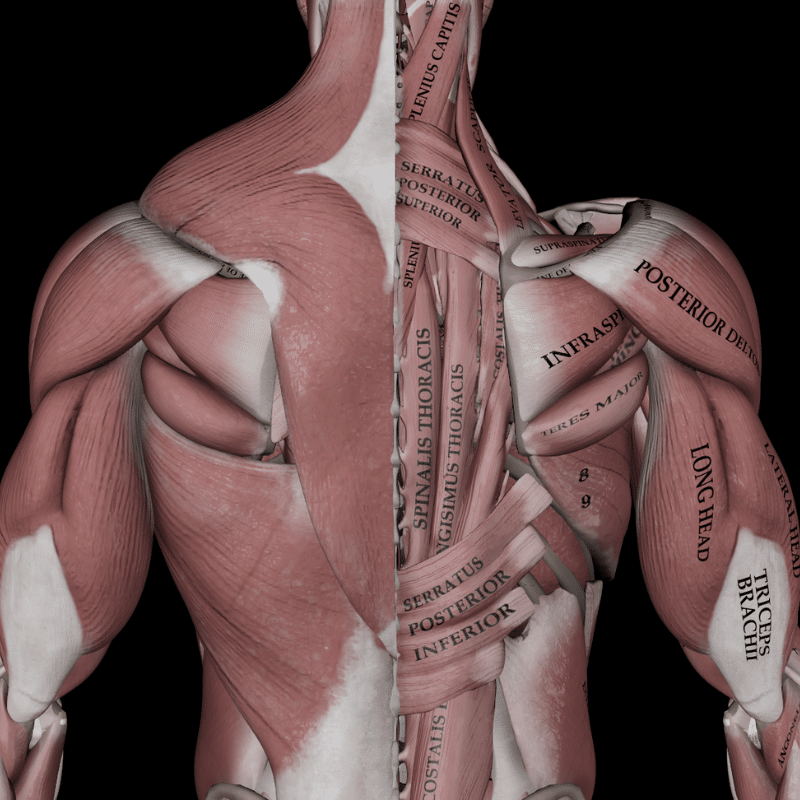The back muscles play a vital role in providing stability, support, and movement for the spine, shoulders, and upper limbs.
They are organized into layers that perform various functions, from powerful gross motor movements to fine, precise stabilization of the vertebrae.
Understanding the structure of these muscles helps develop strength, improve posture, and prevent injuries. In this Muscle and Motion article, we will explore the different layers of the back muscles and their individual roles.
Understanding the layers of back muscles
The back muscles are categorized into two main groups based on their location and function:
- Extrinsic back muscles: These are the muscles located superficially and intermediately. They primarily control movements of the upper limbs and assist in respiration.
- Intrinsic back muscles: These muscles are located deeper in the back and are responsible for stabilizing the spine and maintaining posture.
This article will cover both groups, focusing on the intrinsic muscles responsible for spinal movements and stability.
The superficial extrinsic back muscles
The superficial extrinsic back muscles lie just beneath the skin and play a critical role in controlling upper limb movements. These muscles connect the vertebral column to the shoulder girdle and arms, allowing for a wide range of movements like lifting, pulling, and rotating the arms. Key muscles in this group include:
- Trapezius: A large, triangular muscle that spans the upper back, responsible for moving and stabilizing the scapula (shoulder blade) and supporting shoulder movements.
- Latissimus dorsi: A broad muscle that covers much of the lower back, forming the main bulk of the posterior torso and connecting the lower spine to the upper arm.
- Levator scapulae: A smaller muscle located along the side of the neck, helping to lift and rotate the scapula.
- Rhomboids (major and minor): These muscles lie deep beneath the trapezius and retract the scapula, pulling it toward the spine to provide shoulder stability.
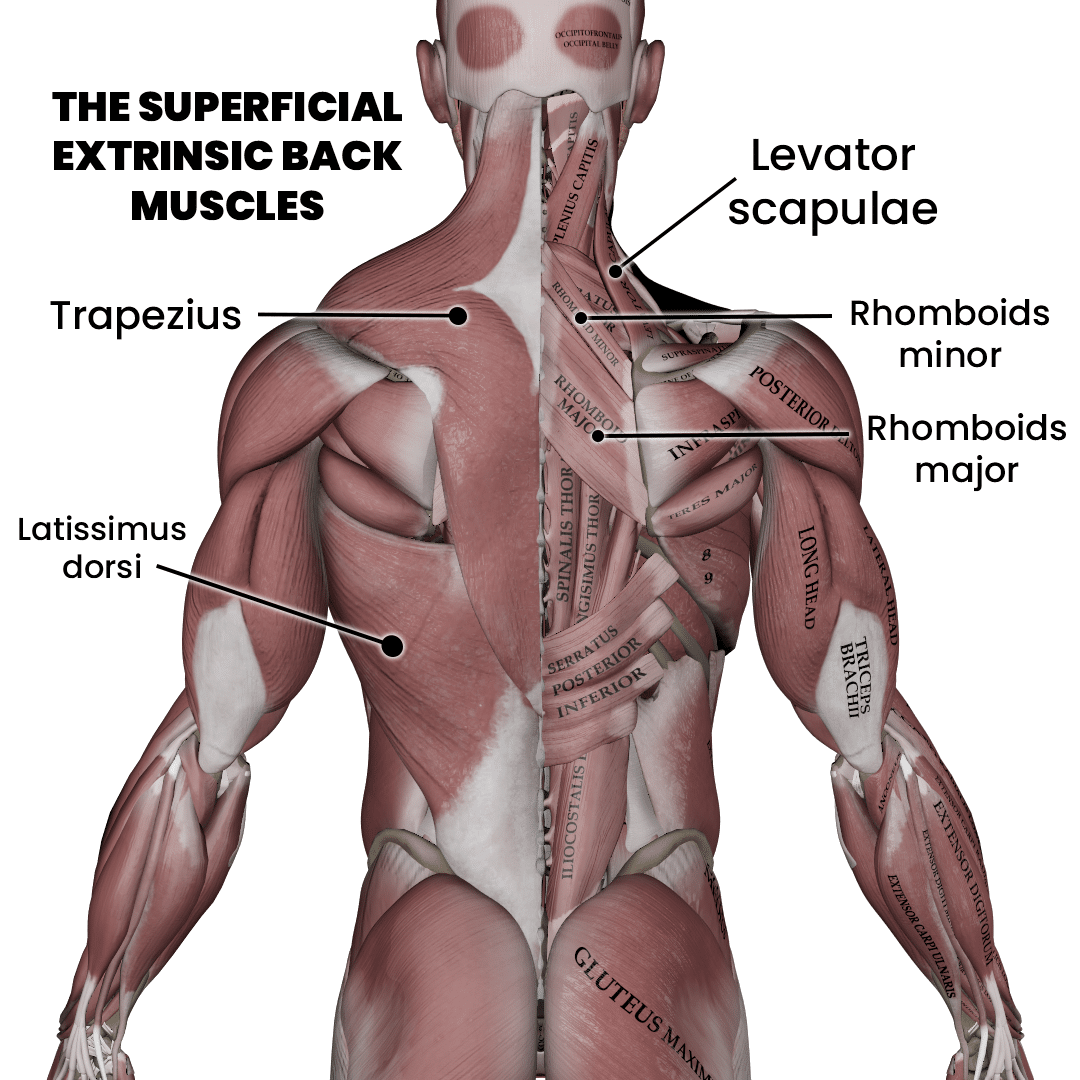
The intermediate extrinsic back muscles
The intermediate extrinsic back muscles are located beneath the superficial layer and are primarily involved in respiratory functions, assisting in the movement of the rib cage:
- Serratus posterior superior: This thin muscle in the upper back is responsible for elevating the upper ribs to aid in inhalation.
- Serratus posterior inferior: Situated in the lower back, this muscle depresses the lower ribs, assisting with exhalation.
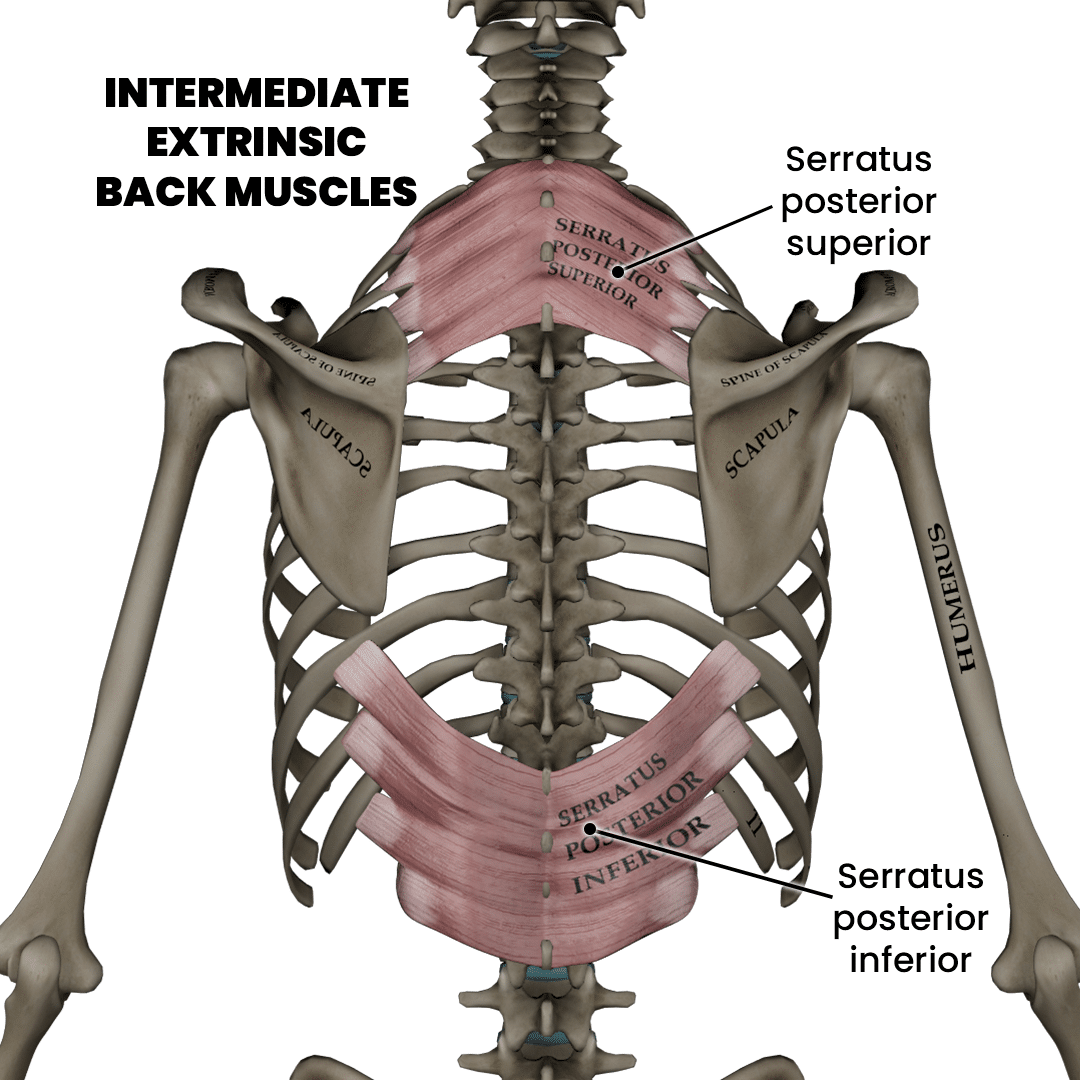
The intrinsic back muscles (deep back muscles)
The intrinsic back muscles, also known as the deep back muscles, are located deeper within the back and are responsible for maintaining posture and controlling fine movements of the vertebral column. These muscles are further divided into three sub-layers: superficial, intermediate, and deep
1. Superficial Sub-Layer: Erector Spinae Group
The erector spinae muscles are the primary extensors of the spine and help maintain an upright posture. This group consists of three major muscles:
- Iliocostalis: The most lateral muscle of the erector spinae group, extending along the spine and aiding in extending and laterally flexing the spine.
- Longissimus: Located in the middle of the erector spinae, this muscle runs from the lower back to the skull, helping extend and rotate the head and spine.
- Spinalis: The most medial of the group, positioned closest to the spine, this muscle extends the vertebral column and helps maintain posture.
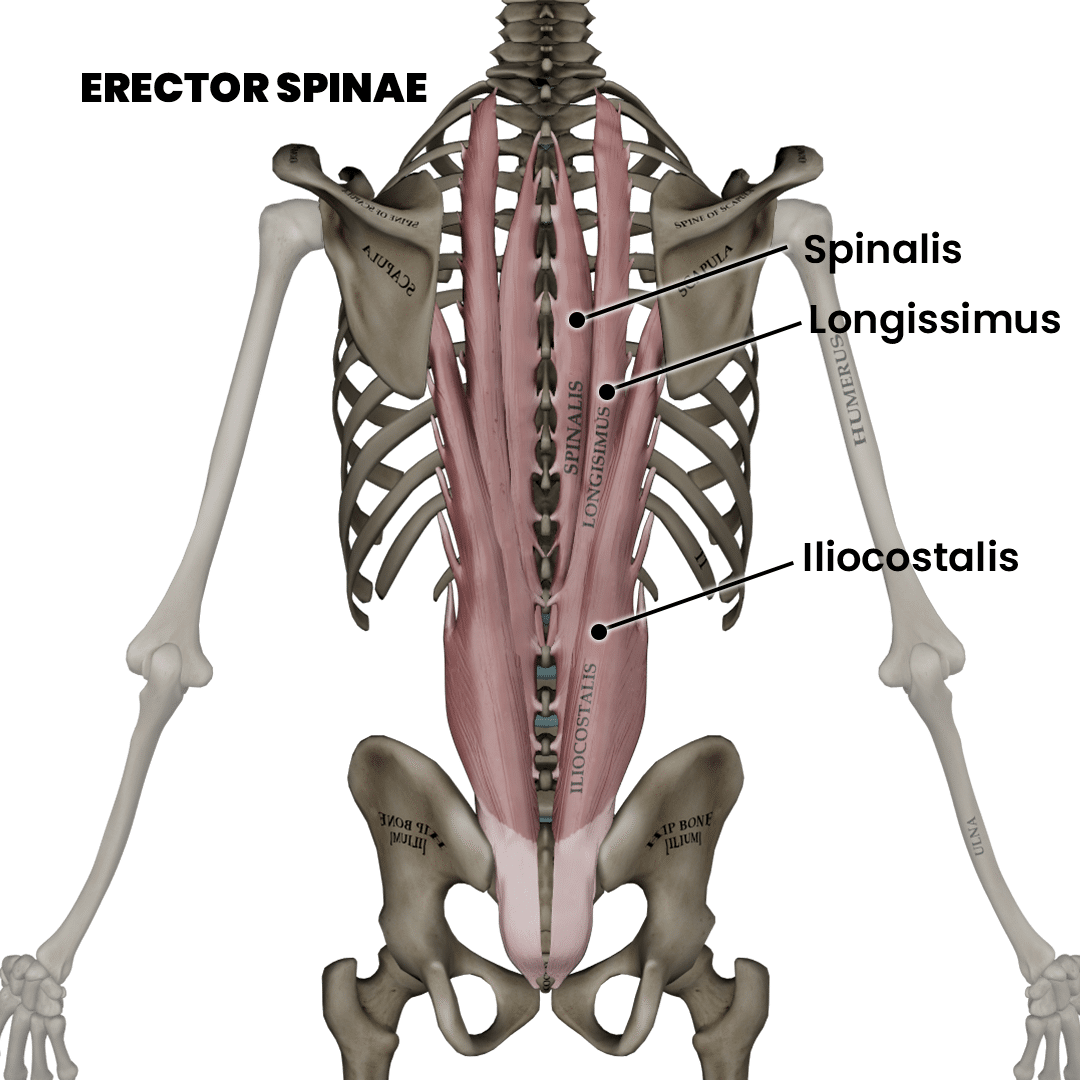
2. Intermediate Sub-Layer: Transversospinalis Group
The transversospinalis group consists of smaller muscles that connect the transverse processes of the vertebrae to the spinous processes. These muscles play a crucial role in fine control and stabilization of the spine:
- Semispinalis: Spanning from the thoracic region to the head, this muscle helps extend and stabilize the spine and head.
- Multifidus: Present along the entire spine, this muscle is key for stabilizing the vertebral column during movement and maintaining posture.
- Rotatores: The smallest muscles of the group assist in rotating and stabilizing individual vertebrae.
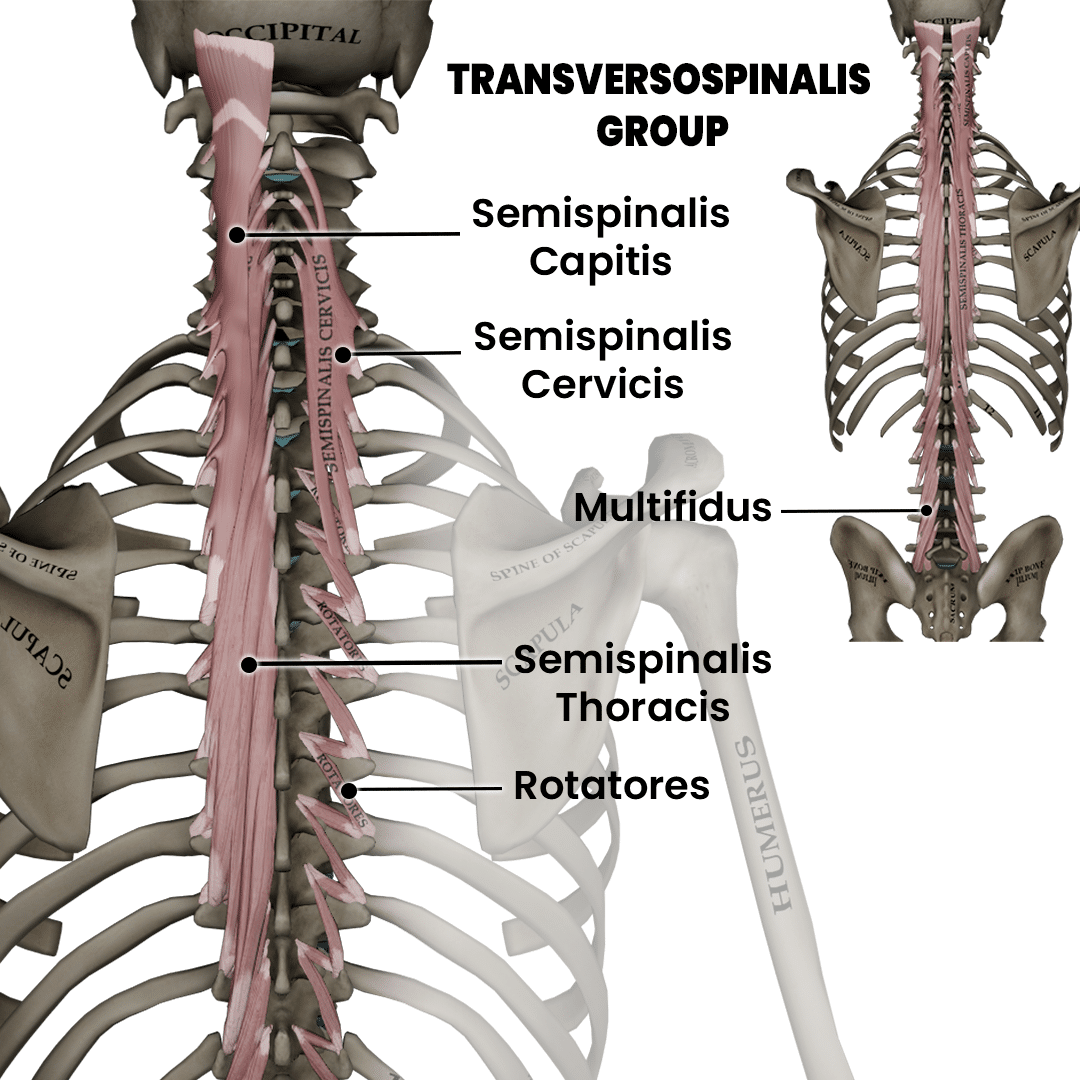
3. Deep Sub-Layer:
The levatores costarum, interspinales, and intertransversarii muscles comprise the deepest layer of the deep back muscles, often called the segmental or minor deep back muscles. They stabilize vertebrae and control fine spinal movements. These muscles are divided into two groups:
Intersegmental stabilizers: These muscles are primarily responsible for providing fine control and stability between adjacent vertebrae.
- Interspinales: Running between the spinous processes of adjacent vertebrae, they help extend the spine and provide stability.
- Intertransversarii: Located between the transverse processes of vertebrae, these muscles assist in lateral flexion and stabilization of the vertebral column.
Respiratory and lateral stabilizers: This group of muscles plays a dual role in supporting respiration while providing lateral stability to the spine.
- Levatores costarum: These small muscles connect the transverse processes of the vertebrae to the ribs, helping elevate the ribs and assist with breathing.
- Quadratus lumborum: While not classified as an intrinsic back muscle, this muscle in the lower back plays a key role in stabilizing the lumbar spine and assisting in lateral flexion of the trunk.
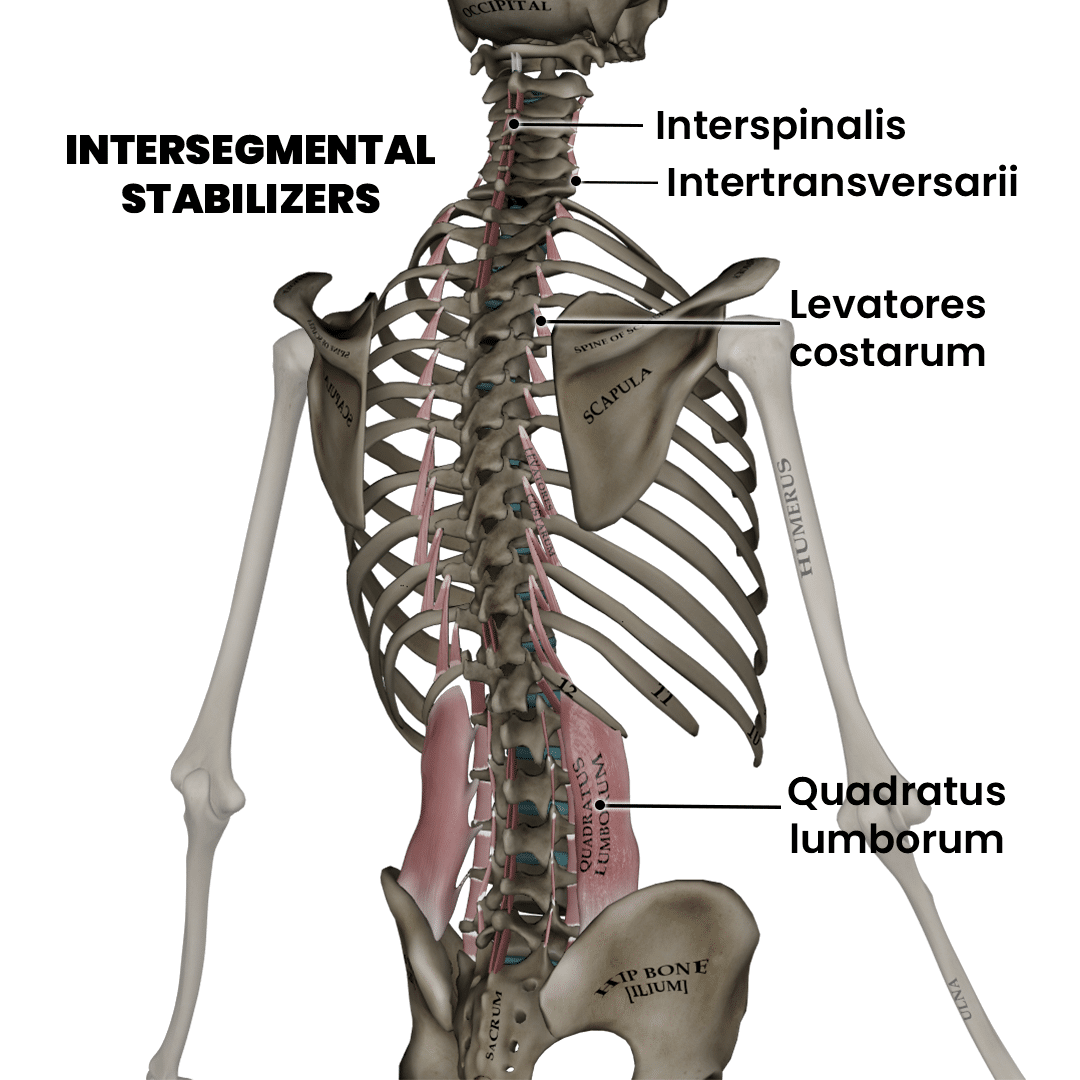
Have you ever wondered what makes our anatomical animations so accurate and engaging? Click here to learn about our Quality Commitment and the experts behind our content.
At Muscle and Motion, we believe that knowledge is power, and understanding the ‘why’ behind any exercise is essential for your long-term success.
Let the Strength Training App help you achieve your goals! Sign up for free.
All anatomy content is included in the Strength Training app.
